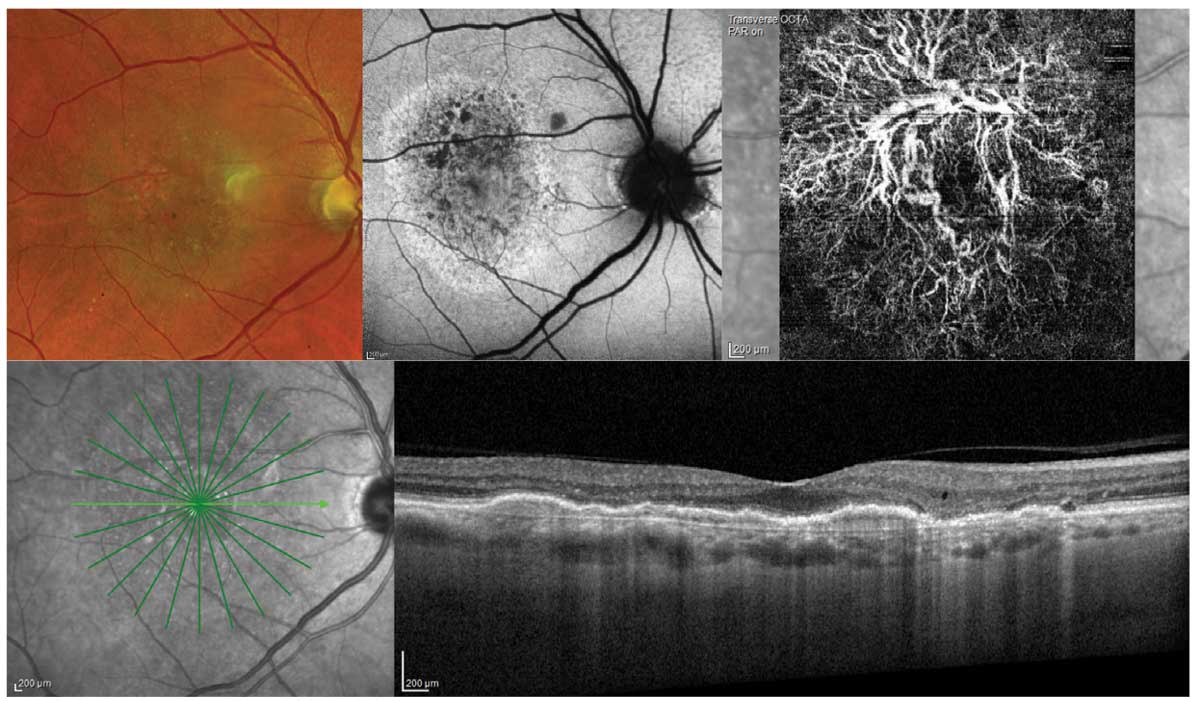 |
Retinal imaging is an emerging helpful tool in cardiovascular disease risk assessment. Note: Image does not necessarily depict an individual at risk for heart attack. Photo: Jessica Haynes, OD, James Williamson, OD, and Mohammad Rafieetary, OD. Click image to enlarge. |
New research suggests retinal imaging may be capable of identifying patients at high risk for heart attack based on retinal biomarkers associated with cardiac function, such as retinal blood vessel density and tortuosity.
To predict incident myocardial infarction, the researchers used a combination of retinal images and patient metadata to estimate left ventricle mass and end-diastolic volume in 5,663 qualifying subjects. Their models employed cardiovascular magnetic resonance imaging (end-diastolic, short-axis view), retinal imaging and demographic data from the UK biobank imaging study.
They found the following, based solely on retinal images and demographic data:
Mean left ventricle mass was 4.4g.
Mean left ventricular end-diastolic volume was 3.02ml.
Risk of myocardial infarction had an area under the curve of 0.8, a sensitivity of 0.74 and a specificity of 0.71.
“Our results indicate that one could identify patients at high risk of future myocardial infarction from retinal imaging available in every optician and eye clinic,” the authors wrote in their paper. They noted that using cardiac indices and demographic data together (vs. demographic data alone) can improve prediction of heart attack incidence.
They tested their method on the AREDS dataset as well, reporting a slightly lower performance but an overall discrimination capacity similar to that of established cardiovascular disease risk assessment models. “This highlights the potential for our approach to be employed as a second referral tool in eye clinics/opticians to identify patients at risk of future myocardial infarction events,” they wrote.
Diaz-Pinto A, Ravikumar N, Attar R, et al. Predicting myocardial infarction through retinal scans and minimal personal information. Nature Machine Intelligence. 2022;4:55-1. |

